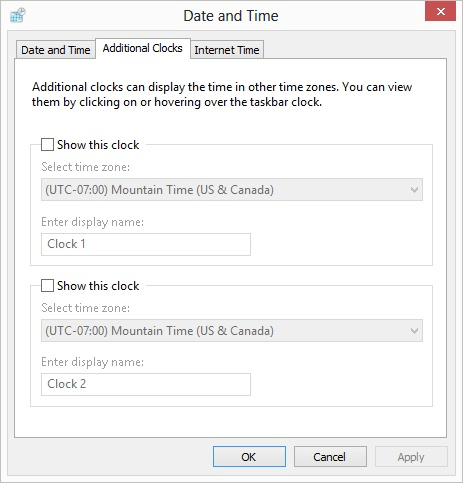Your computer keeps track of the current time and uses that time for a lot of different purposes. For instance, it uses the time to mark when files are updated or when different events occur on the computer. Windows makes this time available to you as a clock, visible at the right side of the Taskbar (if you are viewing the desktop).
Interestingly enough, you can define additional clocks in Windows. Why would you want to do this? In case you need to keep track of what time it is somewhere else in the world. The time displayed in this additional clock doesn't affect anything that Windows does, it is simply for your edification and convenience.
You can create an additional clock by following these steps if you are using Windows 7 or Windows 8:

Figure 1. The Additional Clocks tab of the Date and Time dialog box.
If you are using Windows 10, the steps are a bit different:
At this point it may appear that nothing has happened in Windows—the current date and time still appear in the normal place on the Taskbar. However, if you click once on the date and time on the Taskbar, you'll notice that your additional clock is displayed to the right of your primary system clock.
![]()
![]()
![]() This tip (10795) applies to Windows 7, 8, and 10.
This tip (10795) applies to Windows 7, 8, and 10.
Windows can display up to three separate clocks so you can keep track of what time it is in various time zones. If you ...
Discover MoreWant to know what today is? How about the date for next Thursday or the second Friday in October? Windows can display a ...
Discover MoreWindows can utilize resources on the Internet to make sure that your computer's internal clock is working at the right ...
Discover MoreThere are currently no comments for this tip. (Be the first to leave your comment—just use the simple form above!)
Copyright © 2025 Sharon Parq Associates, Inc.
Comments